What is the first thing that comes to your mind when you think of Pugs? Flat face, bulgy eyes, short legs, and a cute bark? Yes, I thought so.
But, what about biting, lunging, nipping, and overall being a meanie? Are pugs aggressive little pooches, channeling Frank the Pug from Men in Black?
Let’s find out.
Are Pugs Aggressive?
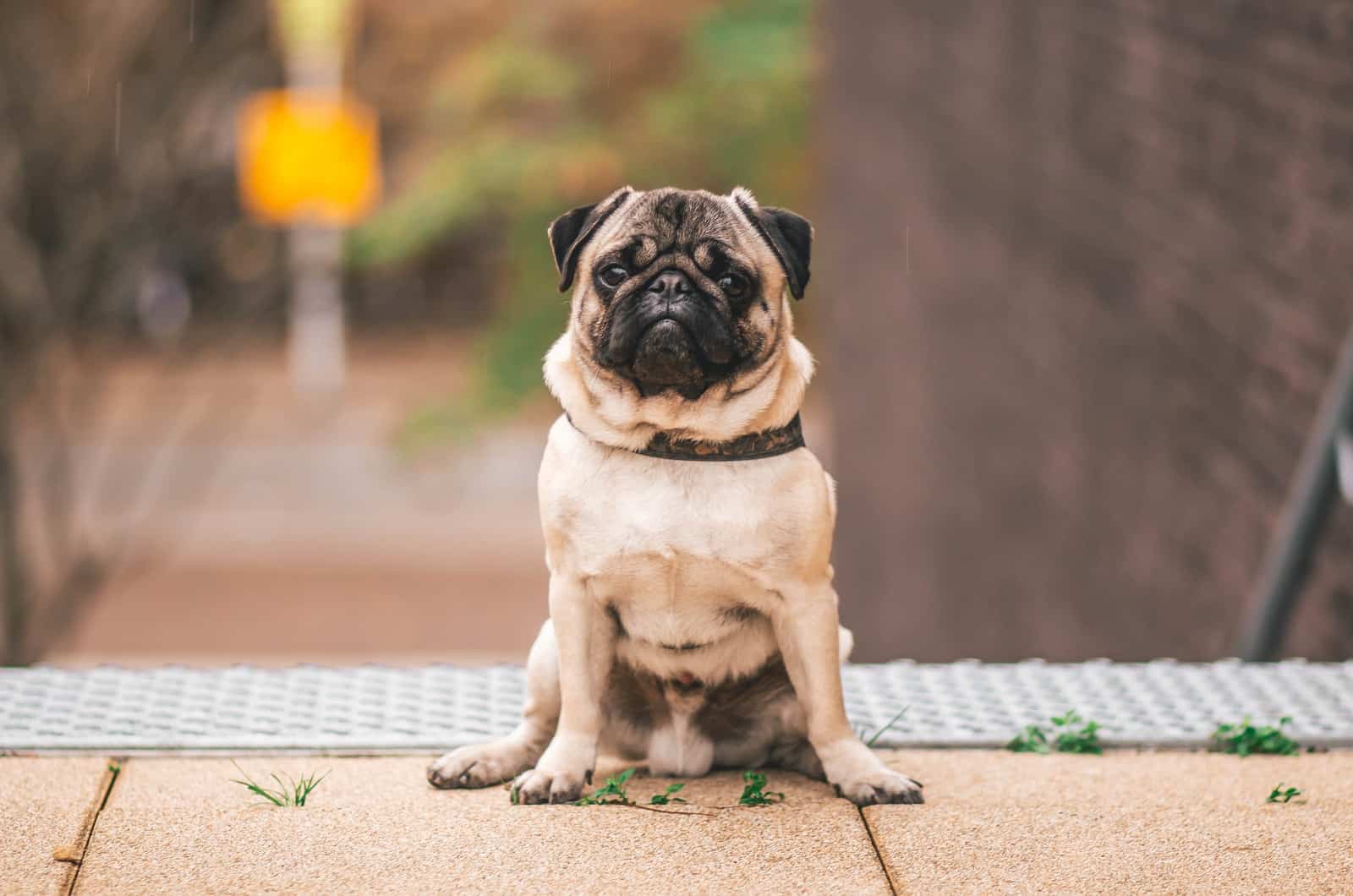
With their cartoonish looks and humorous behavior, pugs are one of the most popular breeds in the world. But are they an aggressive dog breed? Simply put: no.
Pugs are naturally not aggressive dogs, but improper socialization can lead to some aggressiveness problems such as barking, nipping, and lunging. Such aggressive behavior can lead to various social problems, including introducing a new family member to a pug.
The 5 Most Common Reasons For Aggressive Behavior In Pugs
Dogs are social beings with body language being the main way of showing emotions. They wag their tails to show they are happy, they whimper or yelp when they are in pain, and they growl and bite when they are aggressive. Pugs are no different. They are an ancient breed of dogs, bred to become lap dogs, but they can still have some behavior problems.
1. Lack Of Obedience Training
Pugs are a clever but stubborn dog breed. Proper obedience training is required with a lot of positive reinforcement and proper socialization from a young age.
Dog owners typically make their first mistake right at the beginning with their new puppy when they allow them bad behavior because they are cute, and it’s just what puppies do. It is hard to resist when our pooch has such a cute little face.
But, proper training and proper reaction to the first signs of aggression are very important. We believe our article on how to socialize an aggressive dog is useful to read.
2. Fear Response
We have all heard different sayings about what happens when you corner an animal. We can also use the same expression on us humans. It all leads to one conclusion: fear combined with a situation where there’s nowhere to escape triggers a so-called “flight or fight” reaction. If there is no flight, we fight.
That’s what dogs do, too. Fear can cause aggressive behavior.
Dogs feel threatened and act by the rules of attack or get attacked.
They want to defend themselves from a thing that scares them.
This is a behavior common in all dog breeds, no matter the size, from german shepherds and huskies to pugs and chihuahuas.
It comes from their lack of socialization or previous traumatic experiences, which lead to social insecurities. They are uncertain how to behave in a place that is unfamiliar or when they meet a new dog, so they choose the defensive-offensive stance.
They can stiffen their body, show the whites of their eyes or curl their lips.
Fear aggression is characterized by fast nips or bites. A dog can show teeth or growl to warn off a possible threat. This kind of behavior is common in both male and female dogs, as well as adults and puppies.
3. Previous Experience ( Puppyhood )
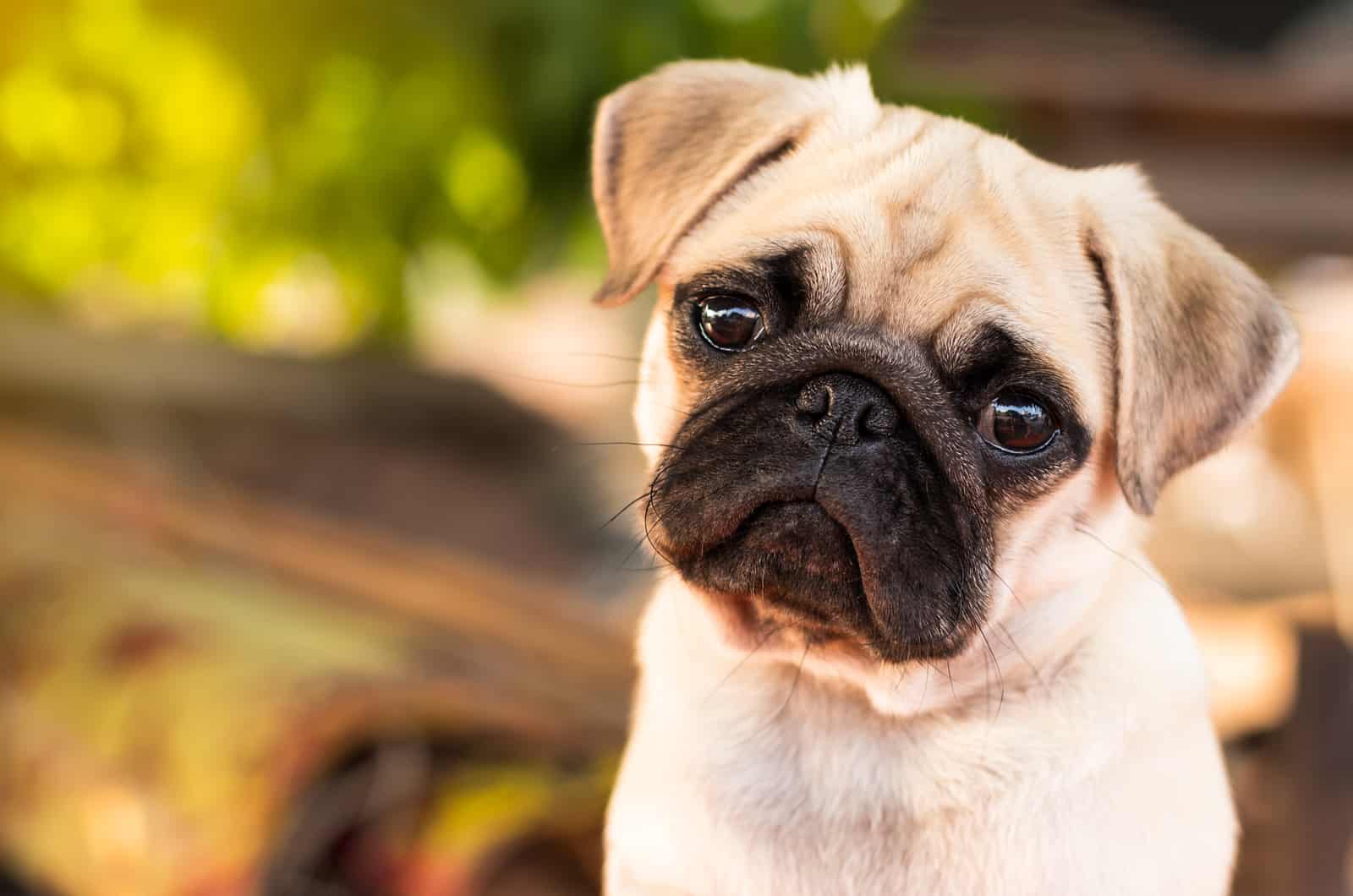
Dogs are social beings. They develop their social skills early in their puppyhood. Puppies learn how to behave from their mom. They develop their temperaments and unique personalities in interaction with their brothers and sisters. Of course, genes play a vital role in development, but the influence of the environment and early social experiences play a role, too.
Dogs’ ancestors are wolves, and even today we have many dog breeds that are wolf-like. So, dogs are pack animals, adapted to living in a group. Hierarchy is very important in dogs. They establish it early on and the position on a hierarchy ladder can shape the dog’s behavior.
The pug breed might be small and cute, but they are an ancient dog breed, worthy of kings. They were originally bred to be companions of Chinese rulers.
So, small dogs or not, they all have rules to follow when interacting with other dogs.
If trauma happens in puppyhood, it can lead to insecure and anxious behavior.
Rescue puppies are especially prone to traumatic experiences.
Abuse, neglect, harsh street life, or lack of socialization can lead to aggression later in life.
Dogs with such experiences don’t know how to behave differently because that is what they learned as young pups.
4. Health Problems
Pugs are a brachycephalic breed of dogs. That means they have a shorter shape of skull than other breeds, or simply said they have a flat-faced look. Also, they were purposefully bred to have wrinkles on the face and a short, barrel-shaped body.
Does this mean they can have health problems?
Yes. Every dog breed can have some health issues or be prone to a certain health-related problem.
What are the most common pug health problems?
1. Respiratory problems. Due to their specific skull shape that makes the nostrils or soft palate too small, they can have breathing problems. Obstructed airflow can make the pups have a hard time breathing. They pant, wheeze, and gasp for air.
2. Skin problems. The wrinkles on the pug’s face are a perfect spot for bacteria accumulation and can later cause inflammation. The wrinkles make the environment moist, making a spot for yeast to thrive, too.
3. Eye problems. Their flat faces and shallow eye sockets can cause bulgy eyes. This happens if the collar is too tight or if we tug on a collar too hard. It can cause the eyeballs to “pop out” of the socket. It is a dramatic but reversible situation.
If a dog is in pain or discomfort, it can cause them to behave unexpectedly and aggressively.
The pain causes additional stress which makes a pug dog anxious and can cause various aggressive outbursts.
Some neurological disorders can cause aggression as well. For example, seizures, dementia, or brain tumors. These medical conditions cannot be diagnosed at home. That’s why it is important to take the aggressive dog to a vet where a proper diagnosis can be made.
It is also very important to know that animals are excellent at hiding their illnesses. If we don’t pay attention, we usually notice something is wrong when the dog shows clear signs of disease.
What are some of the behavioral changes caused by an illness?
1. lethargy
2. vomiting
3. avoiding food and/or water
4. hiding/staying in quiet places
If you notice one or several of these signs, taking your dog to a vet is the best option.
Another reason for sudden aggressive outbursts is a “non-intentional” bite or a reflex bite.
Your pug doesn’t want to bite you, but when you touch a painful place on its body, the pug might instinctively bite the cause of the pain – your hand.
This can also mean that they are aggressive only in certain situations or places. For example, at the vet clinic.
The dog can associate pain and discomfort with the clinic and act aggressively towards the staff.
Aggression can never be encouraged.
It can never be resolved with aggression as well, no matter if the dog is aggressive towards only one person or not.
Hereditary factors can play a role too. Every dog inherits characteristics from their parents.
If one of the parents has an aggressive trait, it can be transferred to their descendants and play an important role in the social development of a puppy.
5. Resource Guarding
Dogs are curious, always sniffing around and finding new things to be obsessed with.
They can find a leaf, a flower, or even a rock and play with it for hours.
But, what about food?
Getting food and water is the basic need of all living beings. And, when it comes to sharing, some dogs are not up for it. This type of behavior can lead to aggressiveness. Pugs are dogs too, and they can become overprotective of their food.
This type of aggression is called possessive aggression.
They can exhibit such aggression through growling, biting, or barking. Why do they do it?
Some primal instincts are always present in our furry companions. Such behavior was vital when they needed to survive in the wilderness.
But, it is vital for stray dogs as well, where food means staying alive.
The 3 More Reasons For Pug Aggression
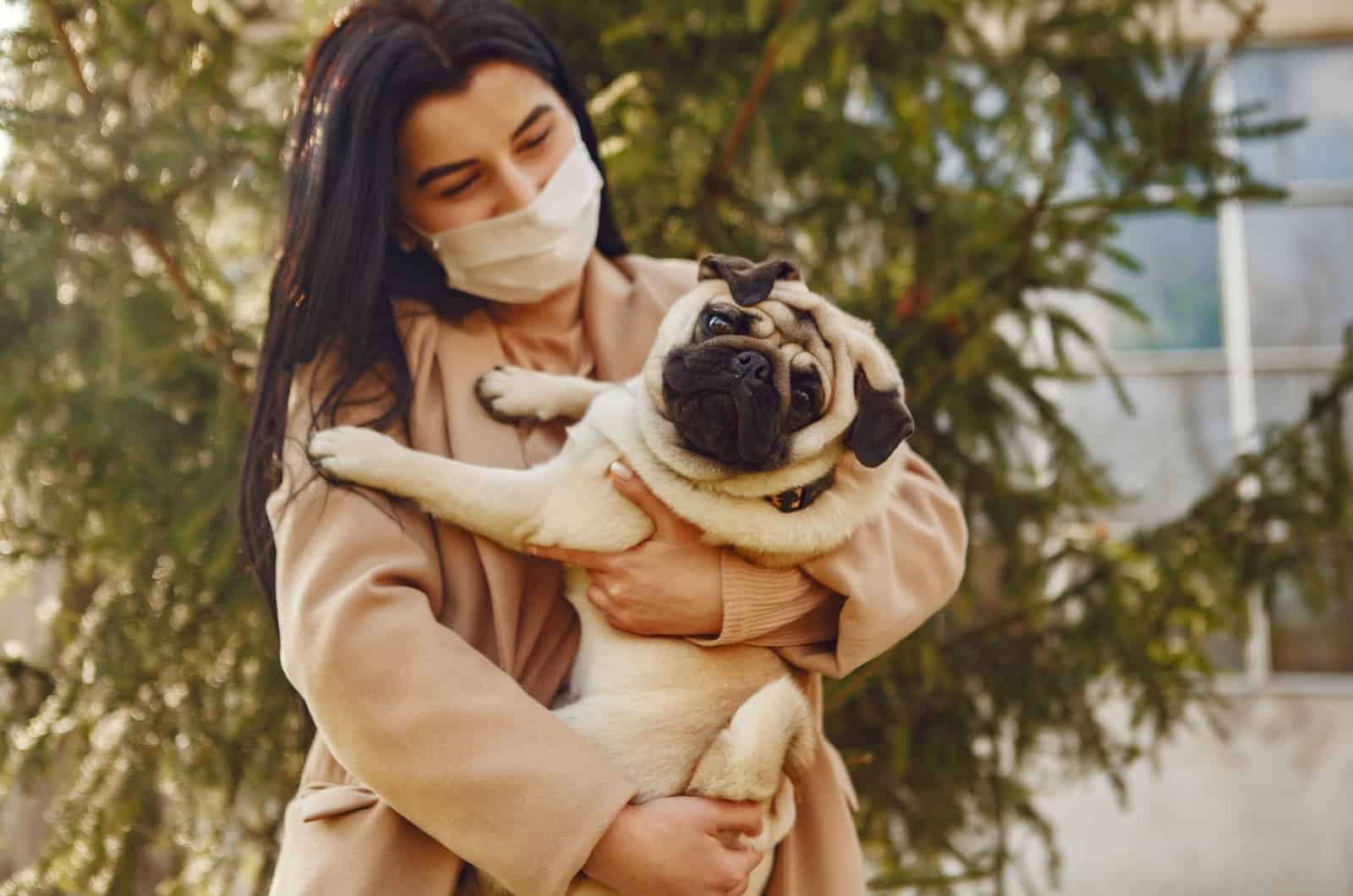
1. Territorial Aggression
Territorial aggression occurs in dogs with a living in a pack mentality or in dogs that lack proper socialization.
It is important to introduce dogs to other people or animals on their territory as well, in order for them to understand that it is OK to let others get “on their land”.
Any form of aggression towards “outsiders” should be discouraged early on.
A firm hand and determination to show your dog that it is bad to chase the postman or a neighbor is a must.
2. Redirected Aggression
Redirected aggression happens when someone interferes while the dog is aggressively reactive to a certain situation. In such a case, a dog can turn and show aggression towards the interfering person.
For example, stepping in to break off the fight between the dogs.
3. Sex-related Aggression
Redirected aggression happens when someone interferes while the dog is aggressively reactive to a certain situation. In such a case, a dog can turn and show aggression towards the interfering person.
For example, stepping in to break off the fight between the dogs. Find out also why dogs bark when humans fight.
Sex-related aggression happens in intact male and female dogs. It can happen in spayed and neutered dogs as well, but it is less common since the hormonal influence on behavior is reduced.
This behavior is common in the wild where males and females fight for dominance. The higher their place on the ladder, the higher their chances of reproducing.
Sex-related aggression is more common in male dogs than in female dogs.
This type of aggression is also more common in a household with more than two dogs.
Once again, early proper socialization is of great importance in preventing this type of aggressive behavior.
The 5 Most Common Signs Of Pug Aggression
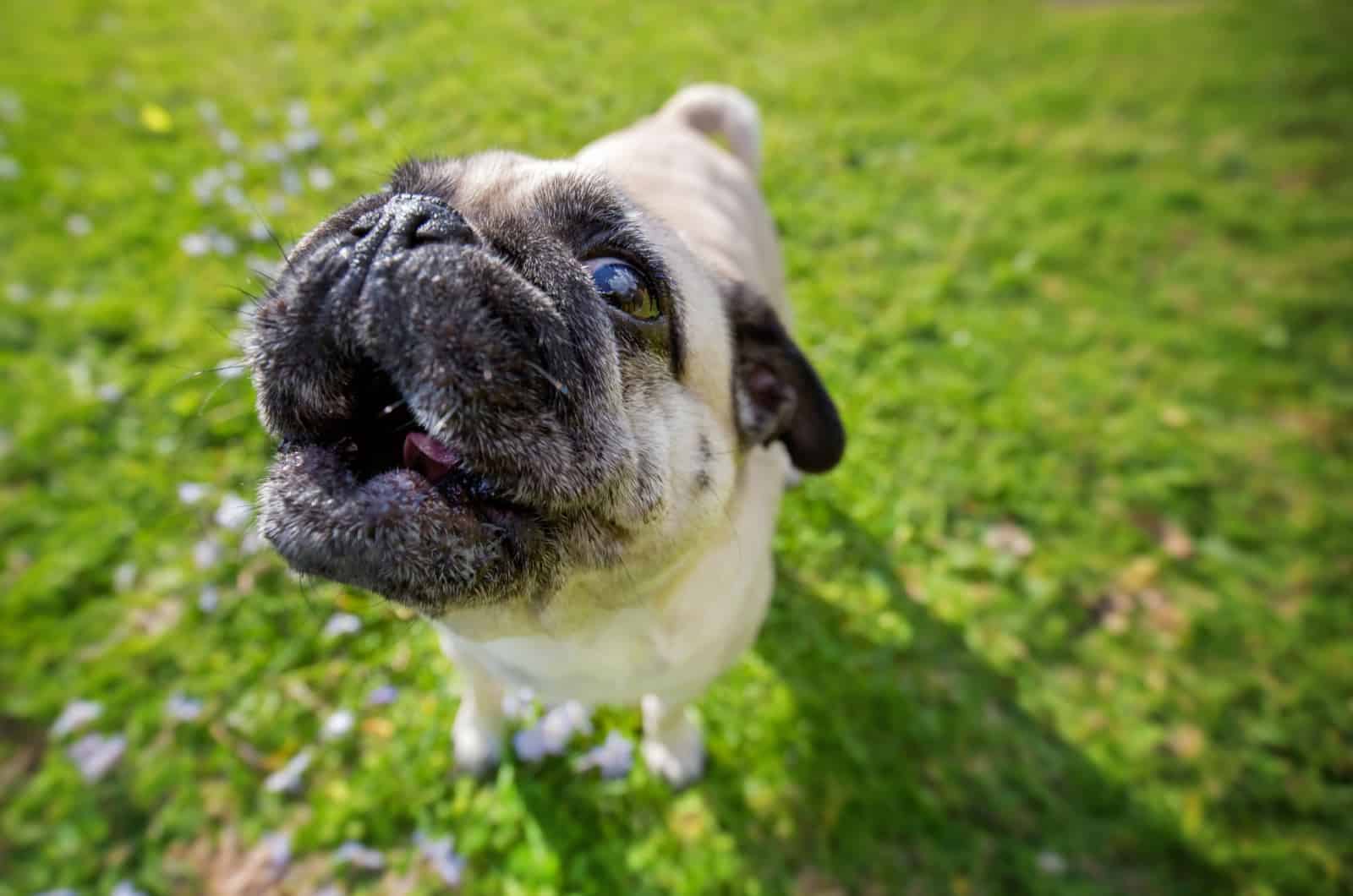
Dog aggression is normal behavior that plays an important communication role in dogs. But, it can cause serious social problems both for our furry friends and ourselves.
1. Showing Teeth
Showing teeth can mean many things in dogs. If they have a stiff body posture, then the reasons are of an aggressive nature.
They show their teeth as a sign of discomfort or as a warning.
They want to say “Don’t come any closer!”
2. Stiffening Or Freezing Of The Body
This thing goes hand in hand with the showing of the teeth.
Once again, this is a defensive stance, showing they do not want to have fun but rather to be left alone.
This body stance is one step away from the attack, but, it doesn’t mean it will necessarily come to it.
They are giving their warning first.
3. Nipping
Nipping is a form of sudden and small biting. It can be present when the puppy is playing, but when an adult dog shows such behavior, it can mean a lot more.
Combined with growling, nipping is a sign of aggressive behavior in pugs.
The bitting itself is not severe enough to break the skin and cause serious issues, but they can turn into more serious forms, like proper biting.
4. Lunging
Another sign that can be very dramatic, especially if you are out in the open among other people and their pets is lunging. Lunging is a sudden forward thrust of the body, meant to scare off the opponent.
It can escalate into a real fight, particularly if the other dog breed is also prone to aggressive behavior or simply feels threatened enough.
5. Barking And Growling
These are considered warning signs, too. They can be in a combination of all four other aggression signs.
The saying “A barking dog never bites” cannot be taken seriously.
We can never be sure when the dog will decide to move from a defensive to an offensive stance and attack.
It’s better to be safe than sorry. Now, this is a saying we can take seriously.
What happens when our beloved pugs show these signs? Is it too late to change their aggressive behavior and why does it happen? Let’s find out.
Prevention Of The Most Common Reasons
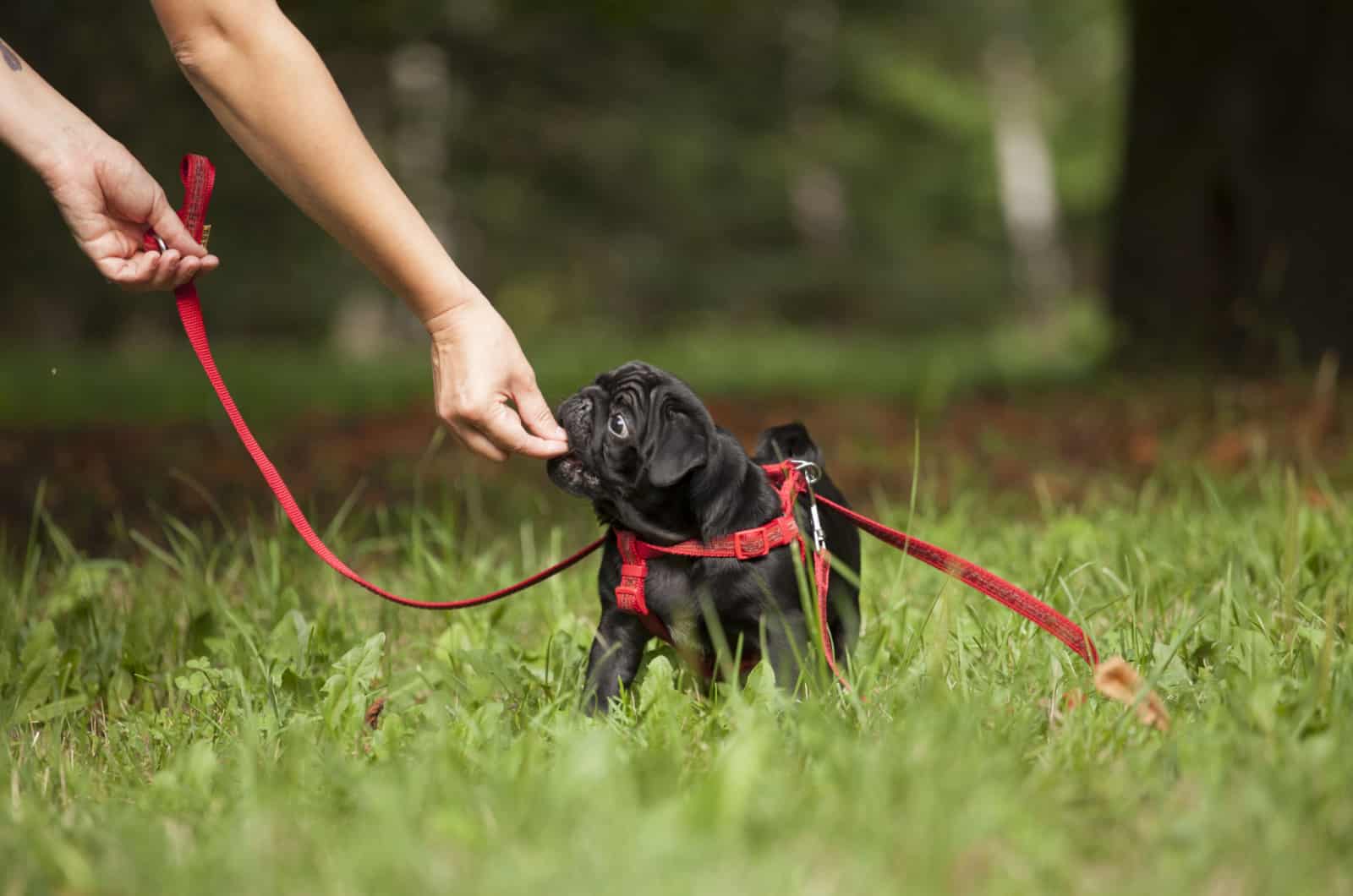
We’ve mentioned the 5 most common reasons for aggressive behavior in pugs, but what can we do in such situations?
1. Proper Training
Never hit your dog, even when it’s showing signs of aggression. It can only cause the opposite of the desired outcome. Threatening, shouting, or hitting your pug turns into an instinctive defensive stance in dogs which may result in more aggressive behavior.
Positive reinforcement is a must. That means rewarding your dog for good behavior. You can give your pooch a treat every time it does something you want to encourage.
Proper training often involves hiring or working with a qualified professional, like a dog trainer or a behaviorist.
Start socialization early. It will help shape your dog’s temperament positively.
Introducing your pug puppy to different dogs in a positive environment with lots of opportunities for them to play and socialize, will enable your dog to build up confidence and adopt good behavior. Taking your dog to a dog park where it can get in contact with a variety of dog breeds, shapes, sizes and colors is also very important.
Don’t bend the rules. We all know how hard it is to resist those cute puppy eyes. Especially with small size dogs like pugs and their short, flat nose and big, bulging eyes. But, setting the rules and sticking to them is important if you want your companion dog to be obedient and a perfect family pet. If you think you won’t be able to resist the wrinkly face, then professional dog training can come in handy.
2. Fear Response Prevention
To avoid such fear-induced aggressive behavior, start with early socialization and dog training, as mentioned above.
Don’t loom over the dog. Fearful dogs can get more agitated and scared if you stand over them. They consider it a threat and can act aggressively.
Don’t punish your dog. Shouting and our own aggressive behavior can cause more problems and lead to more aggression in a dog.
Talk in a sweet manner. A high-pitched, gentle voice is going to calm the dog, relieving the tension.
Get down to the dog’s level. This simple gesture can make a big difference. It says we mean no harm and that we are not trying to punish a dog. By being on the same level, we are showing friendship and compassion.
Never force anything. Forcing a dog to change its behavior and to immediately turn calm can, again, have a backlash. It can make a dog more anxious. Slowly calming a dog, with lots of sweet talks, will make results instead of forcing a dog to do anything.
3. Previous Experience Aggression Prevention

Does previous experience mean they can’t change?
Not at all! Positive reinforcement, proper training, patience, and love can help you modify or completely change your dog’s behavior.
Life on the streets is not the only reason for traumatic experiences.
Unfortunately, bad situations can happen while the dog is still at the breeder. That is why it is very important to buy dogs from reputable and well-known breeders and to report any possible neglect or abuse of the dogs.
4. Health Problems Aggression Prevention
If your pug has a hard time breathing, wheezing, and panting, then the best solution is to transport the dog to a cool location with low humidity. A temperature between 20 – 25 degrees Celsius (68 and 75 Fahrenheit) is ideal for a pug.
Another thing we can do is to calm the dog and avoid over-excitement.
When it comes to their wrinkles, it is important to clean them regularly. We should use a soft cloth and we should do it daily. Never use scented wipes or baby wipes, for they may irritate the dog’s eyes and nose.
The most dramatic issue is when the pug’s eyes pop out. It is important to stay calm and go to the local animal emergency clinic or call your local vet.
If the eye is sticking out too much, you can cover it with wet gauze, but you have to dip it in saline solution, not water.
Never try to put the eye back in by yourself.
And, remember – don’t panic!
5. Resource Guarding Prevention
It is a common belief not to disturb a dog during mealtime. Some dogs are indifferent and they won’t react if they are being touched while eating, but some might take it more seriously.
The point is that we can’t know how a dog might react during feeding time, so we should be cautious when we get a new dog.
Resource guarding can be avoided if we start the training early on when the dog is still a puppy.
If that is not the case, and the dog shows signs of possessive aggressiveness, then we need to take the steps to change such behavior.
It is always a better choice to hire a professional whenever possible. They are qualified and will provide the best results in the safest possible way.
But, when we can’t afford a professional trainer or there isn’t one in our community, we can try to change the behavior on our own.
That’s what the food game is for. It is recommended to choose a safe and familiar place for a dog while doing this. It is simple but it takes a lot of patience.
The point is to toss your dog’s favorite food in the direction of the dog and continue approaching it.
You shorten the distance between you and the dog each time you toss the food.
If the dog growls or shows other signs of aggression, such as stiffening of the body, showing whites of eyes, or lip curling, then we are too close too soon, and we should step back.
Once again, as in any method aiming to change the behavior of the dog, we shouldn’t force anything.
The Conclusion
So, are pugs aggressive? The straightforward answer is: no.
They are lovable, loyal, and clever.
Their unique looks and loving nature makes them one of the most popular dog breeds.
They are good family pets, bonding quickly with all family members. Their size and playfulness make them ideal pets for small children.
They get along with other animals, too.
Having a cat, a bird, or any other pet ( a komodo dragon might be a problem – for a pug ) is not a problem since the pug will make friends with anyone.
Keep in mind that all dogs are individuals with their own special traits.
When you get a dog in your home, you are getting a friend for a lifetime.
And, if you have a pug, you already know they are loyal friends and we should never give them less in return.
Read Next: How Much Do Pugs Cost: Everything You Need To Know!















